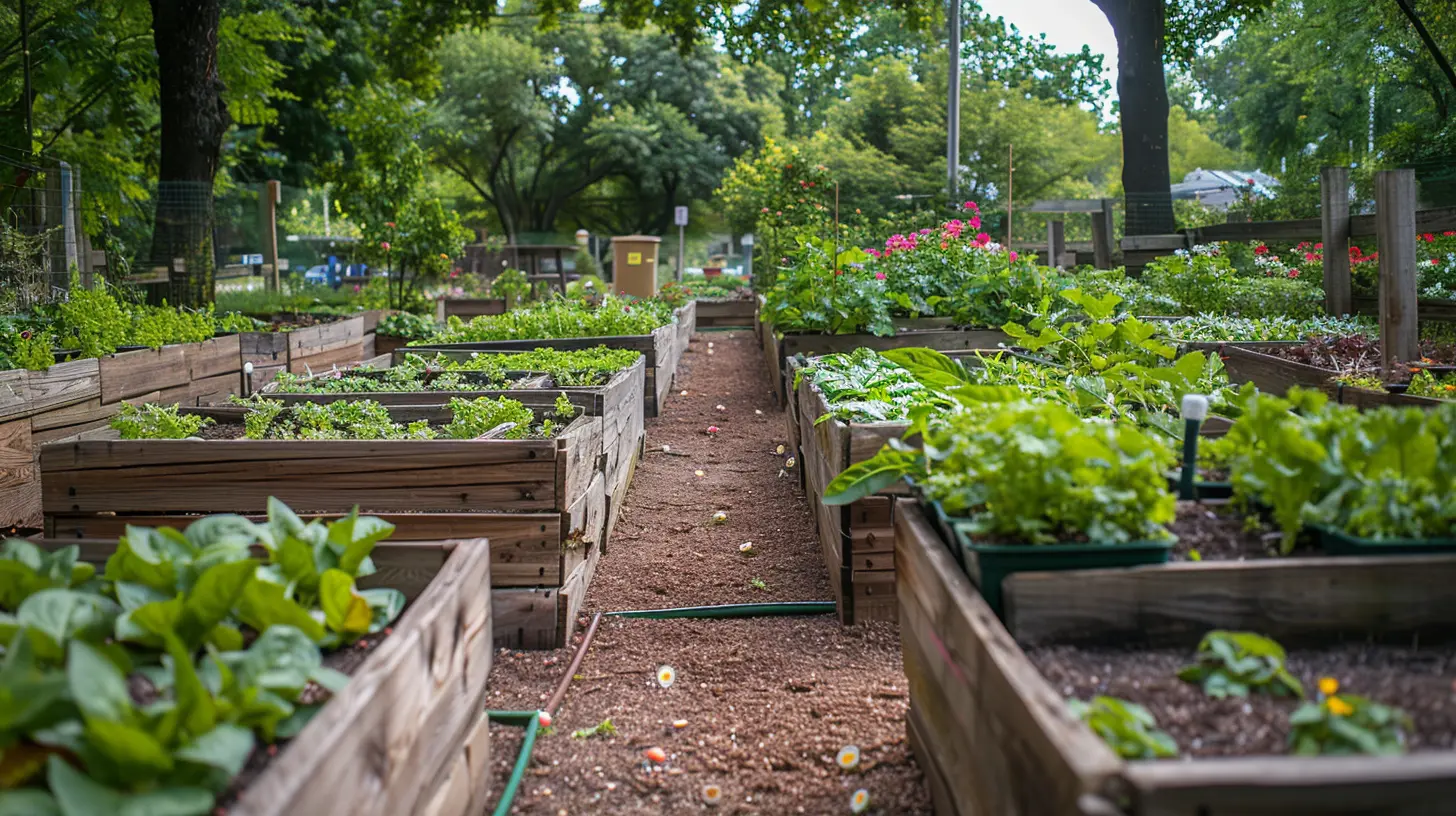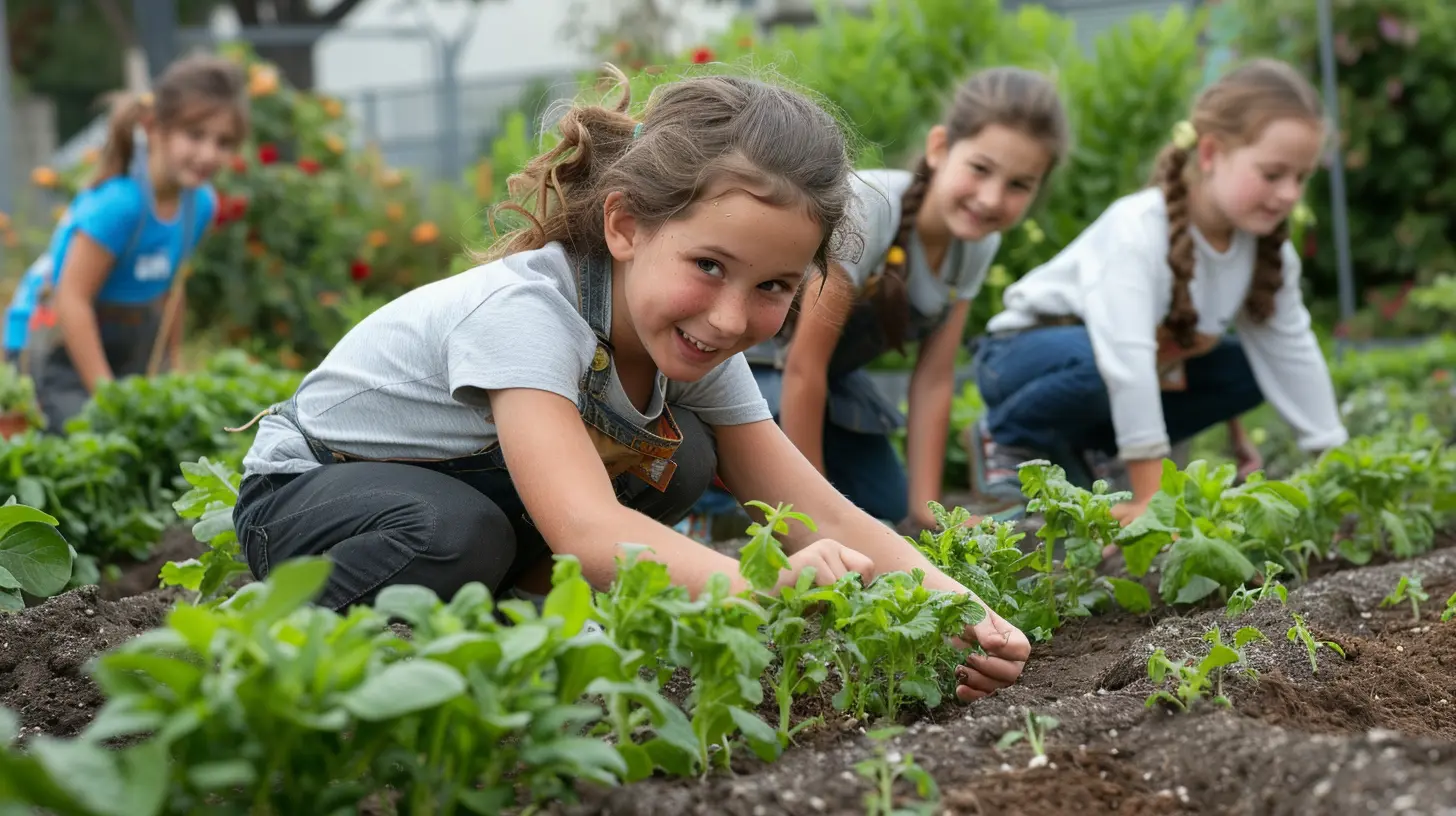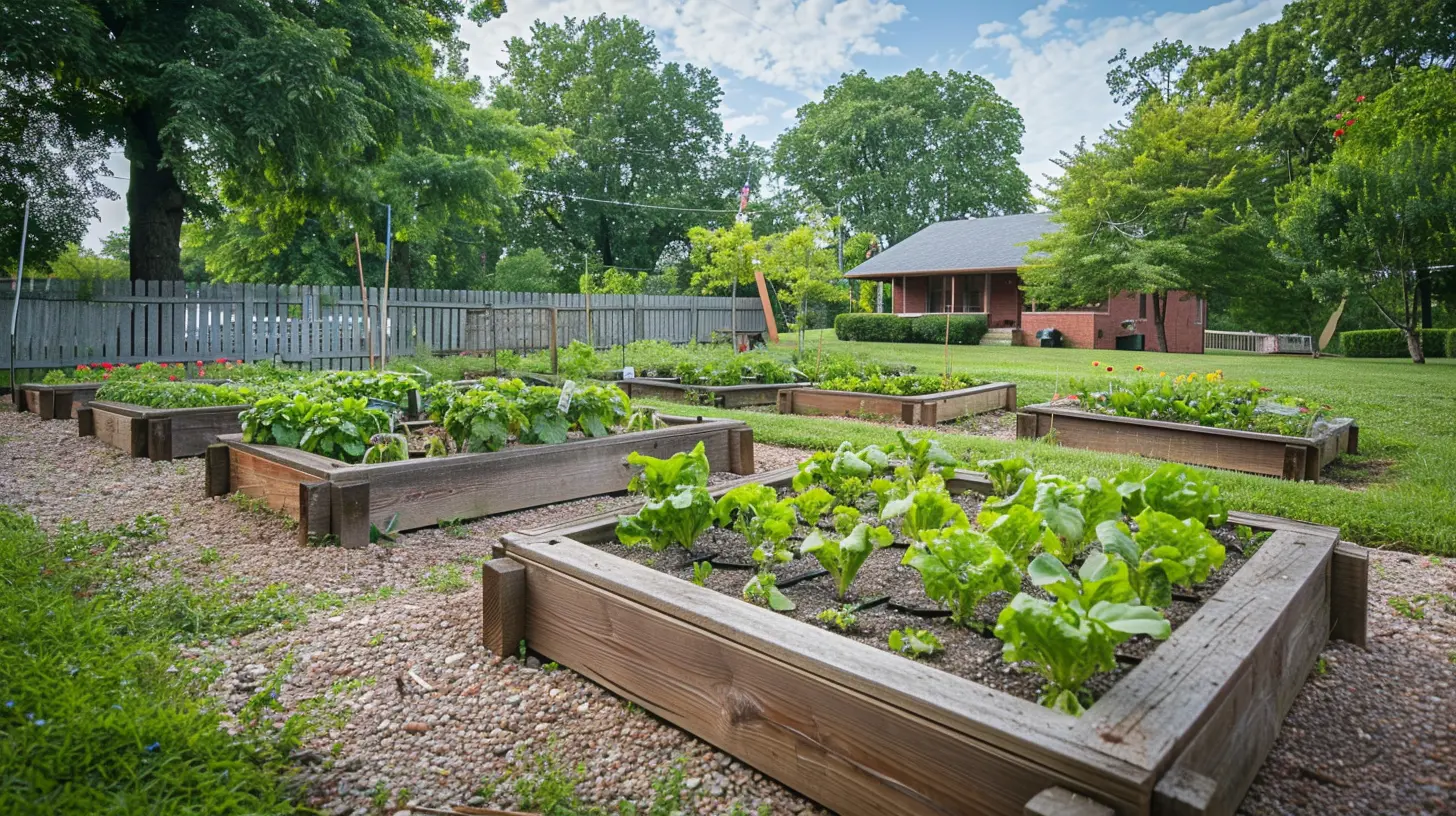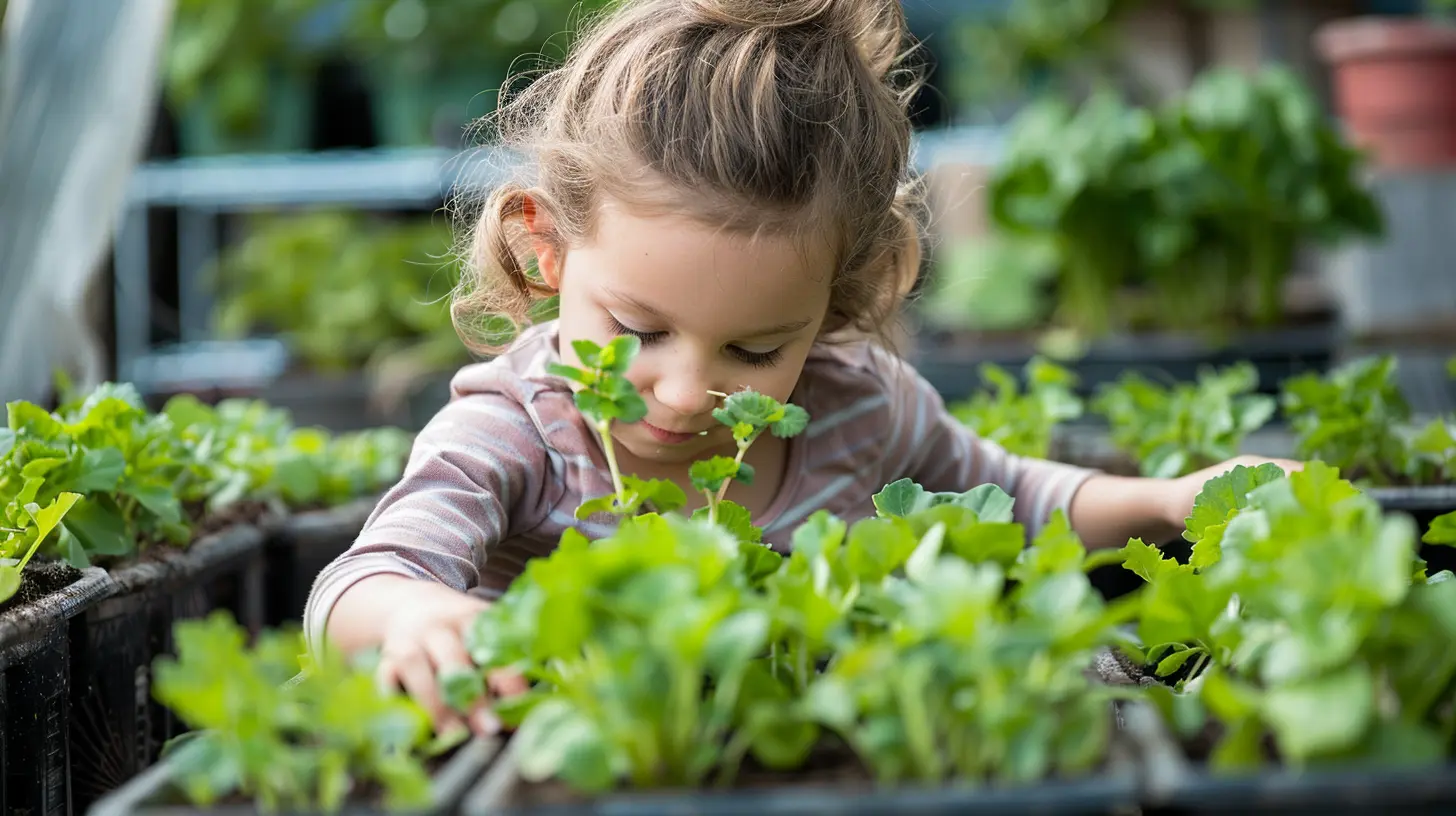School Gardens: Growing More Than Just Plants
18 July 2025
Imagine a place where students get their hands dirty, watch their hard work bloom, and learn life lessons beyond textbooks. Welcome to the world of school gardens—where education isn’t just about books and lectures, but also about nature, patience, and responsibility. These gardens are popping up in schools everywhere, and for good reason! They provide countless benefits, from better nutrition to hands-on science lessons.
But a school garden isn't just about planting seeds in the soil—it's about planting seeds in young minds, too. Let's dive into the wonderful world of school gardens and see why they are such an incredible addition to any educational environment.

The Magic of School Gardens
Gardens have an almost magical ability to turn learning into an adventure. They transform a patch of dirt into a thriving, green oasis where students can experience growth firsthand—and not just the plants!Think about it—when a child plants a seed, they’re not just watching a plant grow; they’re learning patience, responsibility, and the wonders of nature. It’s a hands-on experience that sticks with them far longer than just reading about it in a textbook.

Why Every School Should Have a Garden
1. Hands-On Learning
Let’s be honest—some kids struggle with learning from books alone. But when you turn a lesson into a real-life experience, everything changes.- Science? They observe plant life cycles, photosynthesis, and pollination up close.
- Math? They measure plant growth, calculate spacing, and track weather patterns.
- Reading? They keep journals, write garden stories, and read about different plants.
A garden turns abstract concepts into tangible, real-world knowledge.
2. Healthier Eating Habits
Have you ever noticed how kids are more willing to eat food they’ve grown themselves? There’s something truly special about harvesting your own vegetables—it makes eating healthy exciting!Students who grow fruits and vegetables are more likely to:
- Try new foods
- Eat more produce
- Understand where food comes from
It's a simple yet powerful way to combat childhood obesity and encourage lifelong healthy eating habits.
3. Encouraging Responsibility and Teamwork
A school garden is a shared responsibility. Students must water, weed, and care for their plants. This teaches them:- Responsibility – Plants won’t grow unless they’re cared for.
- Patience – Growth takes time, and instant gratification isn’t always possible.
- Teamwork – A successful garden requires working together and dividing tasks.
These valuable life skills extend far beyond the garden and into everyday life.
4. Mental and Emotional Well-Being
Nature has a calming effect on the mind. School gardens provide a peaceful escape from the usual classroom setting.Studies show that gardening can:
- Reduce stress and anxiety
- Improve focus and concentration
- Boost overall happiness
For students who struggle with traditional learning environments, a garden can be a therapeutic space where they thrive.
5. Environmental Awareness
With climate change and environmental issues making headlines, it's crucial for kids to understand their role in protecting the planet. A school garden teaches them about:- Sustainable gardening practices
- Composting and reducing waste
- The importance of pollinators like bees and butterflies
By learning to care for the Earth, students gain a greater appreciation for nature and develop habits that benefit the environment in the long run.

How to Start a School Garden
Feeling inspired? Starting a school garden doesn’t have to be complicated! Here are some simple steps to get started:Step 1: Gather Support
Convince your school’s administration, teachers, and parents. Show them the amazing benefits school gardens offer.Step 2: Choose a Location
Find a sunny spot with good soil and easy access to water. If you’re short on space, consider container gardening or raised beds.Step 3: Plan the Layout & Crops
Decide what to grow! Vegetables like lettuce, carrots, tomatoes, and herbs are great for beginners. Also, consider flowers to attract pollinators.Step 4: Get the Students Involved
From planting to harvesting, let the kids take charge. When they have ownership, they’ll be more engaged and excited.Step 5: Maintain & Enjoy the Harvest!
Assign responsibilities, create a watering schedule, and watch the garden thrive! Don’t forget to celebrate the harvest with a garden-to-table feast.
Success Stories: Schools Growing More Than Plants
Schools all over the world have embraced gardening, and the results are inspiring.- In California, schools with gardens saw higher science test scores.
- In New York, students who participated in school gardening programs were more likely to eat nutritious foods.
- In Australia, school gardens helped improve mental health and student engagement.
These gardens don’t just grow food—they grow knowledge, confidence, and a deep connection to nature.
The Future of School Gardens
As technology takes over more and more aspects of life, the importance of hands-on learning experiences grows. School gardens offer something that screens and digital tools simply can’t—a direct connection to the natural world.Imagine a future where every school has a thriving garden, where kids learn not just from books but from real-life experiences. That’s a future we should all work toward.
Final Thoughts
School gardens are so much more than patches of soil filled with plants. They are dynamic, living classrooms where kids nurture both plants and personal growth. As they watch their seeds sprout into beautiful, flourishing plants, they also cultivate curiosity, patience, and a deep love for nature.So, whether you're a teacher, a parent, or a student, why not start a garden at your school? After all, the best lessons in life often begin with a tiny seed, a little soil, and a whole lot of care.
all images in this post were generated using AI tools
Category:
Health EducationAuthor:

Zoe McKay
Discussion
rate this article
1 comments
Sarina McWhorter
School gardens cultivate not only plants but also essential life skills. They foster a sense of community, encourage responsibility, and spark curiosity about nature. By engaging students in hands-on learning, these gardens nurture both personal growth and environmental stewardship, creating future advocates for sustainability.
August 5, 2025 at 2:42 AM

Zoe McKay
Thank you for highlighting the transformative power of school gardens! They truly serve as a valuable tool for cultivating both environmental awareness and personal development in students.


